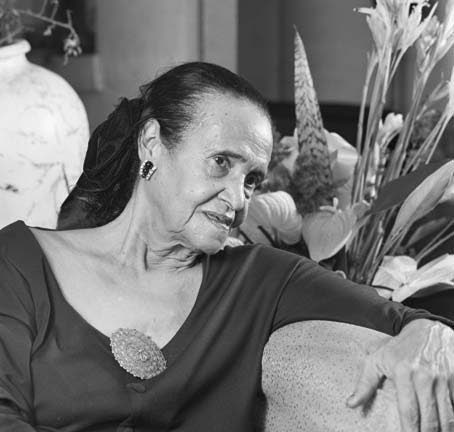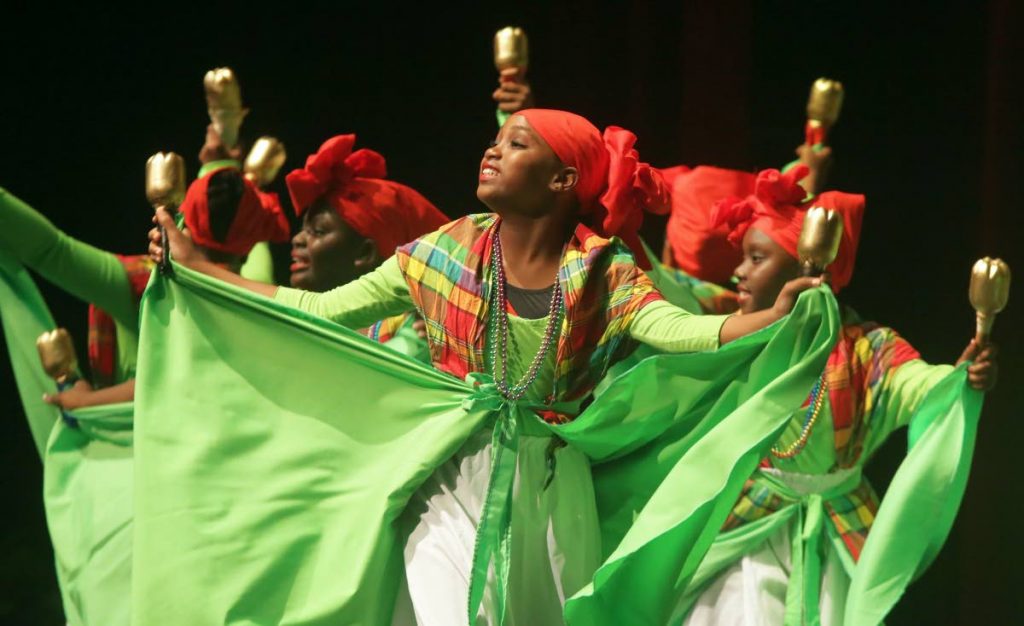Saviour of folk dance

There are people in Caribbean history who transcend even the loftiest notion of heroes and fall within the realm of what we call “characters.” Beryl McBurnie is a character. Her biographer, Judy Raymond, says the dancer, best known for envisioning the Little Carib in Woodbrook, is also the person who “single-handedly rescued and revived West Indian folk dance from ignominy and oblivion." Raymond describes McBurnie as “tenacious and charismatic.” Others considered her obdurate and obsessed.
It turns out that McBurnie’s life is much more than whatever people thought they knew about her.
McBurnie’s mission to save folk dance and give it an honourable home outside of the marginalised places of TT is a quixotic quest captured in Raymond’s 97-page biography, simply entitled Beryl McBurnie. Raymond had first interviewed McBurnie for a feature in 1993 when she realised that only news stories existed about the grand lady of dance. In that interview, she found McBurnie “very engaging and very strong-willed…She had one of those butterfly minds. She would jump from one subject to another. She had an old-fashioned courtesy.”
Raymond was struck by “McBurnie’s beliefs about the importance of culture that propelled her through decade after decade with very little personal rewards. She was a “visionary, charismatic, charming, knowledgeable, driven, persistent and inspiring, but she did not achieve everything she set out to do.”

McBurnie died in 2000, and even now people recall that her passion made her stubborn and difficult as well as mesmerising. In Raymond’s interview McBurnie confessed, “I must always have my own way.”
McBurnie claimed friendship with the late prime minister Dr Eric Williams and other key figures in politics and the arts. She fell out with painter and dancer Boscoe Holder, and they never patched up their differences. Nobel laureate Derek Walcott settle in Trinidad because of her, but then she fell out with him when she insisted Walcott couldn’t use the Little Carib as his base for his Theatre Workshop.
“The Theatre Workshop got put out and they were a moveable feast after that,” says Raymond.
The great conflict in McBurnie’s story is one of personal achievement versus national sacrifice. Readers will wonder if McBurnie could have made it on her own terms as an entertainer in the US.
“She always said it was never her intention to stay there permanently and I think it was true,” says Raymond. “Also, Albert Gomes said her dance was so grounded in local material, it is difficult to see how she would have got new material without coming back to Trinidad regularly.”
In the end, McBurnie’s life came down to boxes of dusty, crumbling correspondence in the Heritage Library basement, fumigated and rescued from the Folk House, once McBurnie’s home before the new owners destroyed it. With mask and gloves supplied by the library, Raymond sorted through the personal books, letters to friends and memorabilia.
“Books were moth-eaten and bookworm-eaten,” she says. “Thieves had broken into the Folk House and stolen the plumbing fittings, so some of the material had become soaked and then the pages dried together.”

It might seem like a sad ending for such a vivacious woman who passed through Trinidad like a whirlwind.
“Most of her dances have been lost because they weren’t written down and there wasn’t video as there is now,” says Raymond.
But great subjects of biographies, characters if you wish, make their presence known long after they are gone if they have the good fortune to have a writer like Raymond to tell their stories.
“Most people will say she founded the Little Carib,” says Raymond, “but what she did in preserving local dance and getting rid of the stigma of local dance people don’t fully understand.”
Raymond succeeds admirably well in presenting all the finely nuanced layers of McBurnie and her achievements.
“She was one of the first people to understand that pan was important and panmen weren’t just hooligans fighting on the street. Red Army and Invaders performed at the Little Carib at breaks in her dance shows. She was on a committee to look at pan’s potential,” says Raymond.
Her admirers often think of McBurnie as a lone woman fighting for dance and fighting to establish and then maintain the Little Carib, but Raymond says she was part of a grander movement that included Williams and CLR James. McBurnie found herself in the cultural part of the independence movement.
“Independence was also about shedding a colonial culture and reclaiming a TT culture,” says Raymond. “In some respects, Beryl was so successful we take for granted how much she accomplished in a number of art forms, and in creating a national identity and pride in that identity.”
Before McBurnie, the folk dances she saved were considered backward and inappropriate for proper young ladies. Raymond says McBurnie changed that. “Middle-class girls went to ballet classes and were taught to play piano. Beryl made it her business to go in the villages and the valleys, watch these dances, learn them and perform them.”
Without McBurnie, Raymond says, there would have been no Best Village.
“The people who do dances now wouldn’t be doing them, because there wouldn’t have been any left. Decades before independence was even thought of, when everyone was brought up in an English tradition, she was one of the people, as I say in the book, that gave Trinidad back to itself by making it a place – and not just a part of the empire.
"The more you think about it, the more astonishing it is, that a middle-class red girl from Woodbrook single-handedly preserved African dance in Trinidad.”
Beryl McBurnie’s story is amazing and inspiring. It reflects TT’s cultural and political history in an exciting, fresh, new light, breathtaking in its scope; remarkable for its ability to fit into 97 pages thanks to Raymond’s crisp, journalistic style. For those who never had the privilege of capturing a glimpse of McBurnie gliding down the street in one of her dance costumes, as though the road were her stage, this is the chance to experience a vivid, beautifully written biography that will convince you of the power of dreams.
The biography Beryl McBurnie by Judy Raymond is available at Paper Based at the Normandie, St Ann's, and online.

Comments
"Saviour of folk dance"